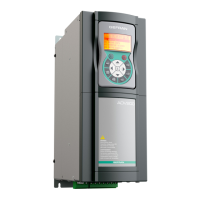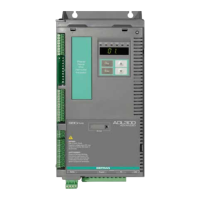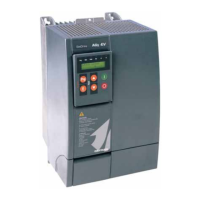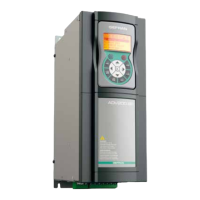_____ _
User Guide Electrical Line Shaft for ADV200 Page 24 of 72
5.7 SLIP RATIO Menu
The Slip function lets you apply a slip % between slave and master.
The Slip function control diagram is shown in the chapter “CONTROL DIAGRAMS” Figure 28. Slip Ratio.
Slip contributes to the definition of the overall ratio set according to the formula:
=
1
1 +
100
where:
•
=
Els Act Mech Ratio
• : mechanical ratio between Master / Slave (with respect to fast shafts)
• : slip ratio between Slave / Master speeds;
• : slip/correction of
is therefore a percentage correction factor of the ratio in use (which could be = 1). The
maximum possible correction is ± .
The actual slip ratio between Slave / Master speeds
corresponds to:
= 1 +
100
For = 0,
=
For = +100%,
= 2
For = 100%,
= 0
The change in slip is applied with an increase or decrease ramp expressed as a time in [s] needed to go from
0% to 100% of correction.
Reaching of the new slip value is signaled with its respective monitor variable.
You can apply the slip value by using an analog input: Els Slip sel = Analog
In this case the slip change range depends on the analog input settings Analog inp x top and Analog inp x
bottom (on the ANALOG INPUTS system menu) according to the relation:
- 100% correction with Analog Inp x Bottom
100% correction with Analog Inp x Top
You can apply a slip correction by using the digital increase/decrease commands.
In this case the correction is applied with a “motopotentiometer” function:
1. On the edge of the command (increase or decrease), apply an initial percentage correction step. The
value of the step is defined in parameter Els Slip Dig Step.
2. If the increase or decrease command is maintained for a time exceeding the time set in Els Slip Hold
T, a subsequent change step is applied, and so on.

